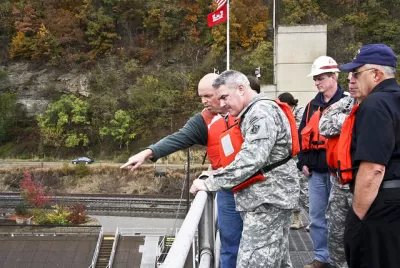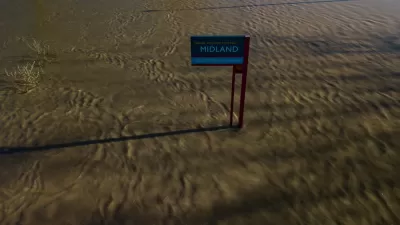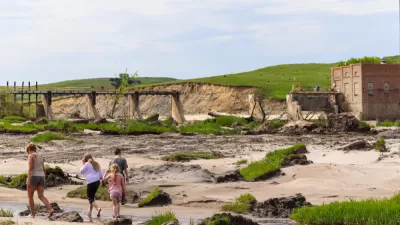River infrastructure is often a target for budget cuts in presidential budgets, only to receive funding from Congress. A huge project to replace dams and locks on the Monongahela River hangs in the balance.

"President Donald Trump’s proposed 2018 budget would bring to a screeching halt work on a Monongahela River project that political and business leaders say is vital to the region’s economy," reports Len Boselovic.
The project by the U.S. Army Corps of Engineers would "replace three sets of aging locks and dams at Braddock, Elizabeth and Charleroi." Congress authorized the project 25 years ago at $750 million. But "[i]nconsistent, delayed funding has increased the project’s cost to between $1.2 billion and $2.7 billion," according to Boselovic.
According to river experts cited in the article, every year there's a dance between presidential budget proposals and the final versions approved by Congress. "For years, under different administrations, the White House consistently has proposed low funding for river infrastructure only to see Congress appropriate significantly more," explains Boselovic.
The article includes more details on the condition of the dams targeted for replacement—Army Corps believes the 110-year-old dam at Elizabeth, for example, is in danger of failing.
FULL STORY: Trump wants to pull plug on Monongahela River work

Maui's Vacation Rental Debate Turns Ugly
Verbal attacks, misinformation campaigns and fistfights plague a high-stakes debate to convert thousands of vacation rentals into long-term housing.

Planetizen Federal Action Tracker
A weekly monitor of how Trump’s orders and actions are impacting planners and planning in America.

In Urban Planning, AI Prompting Could be the New Design Thinking
Creativity has long been key to great urban design. What if we see AI as our new creative partner?

How Trump's HUD Budget Proposal Would Harm Homelessness Response
Experts say the change to the HUD budget would make it more difficult to identify people who are homeless and connect them with services, and to prevent homelessness.

The Vast Potential of the Right-of-Way
One writer argues that the space between two building faces is the most important element of the built environment.

Florida Seniors Face Rising Homelessness Risk
High housing costs are pushing more seniors, many of them on a fixed income, into homelessness.
Urban Design for Planners 1: Software Tools
This six-course series explores essential urban design concepts using open source software and equips planners with the tools they need to participate fully in the urban design process.
Planning for Universal Design
Learn the tools for implementing Universal Design in planning regulations.
Gallatin County Department of Planning & Community Development
Heyer Gruel & Associates PA
JM Goldson LLC
City of Camden Redevelopment Agency
City of Astoria
Transportation Research & Education Center (TREC) at Portland State University
Jefferson Parish Government
Camden Redevelopment Agency
City of Claremont





























